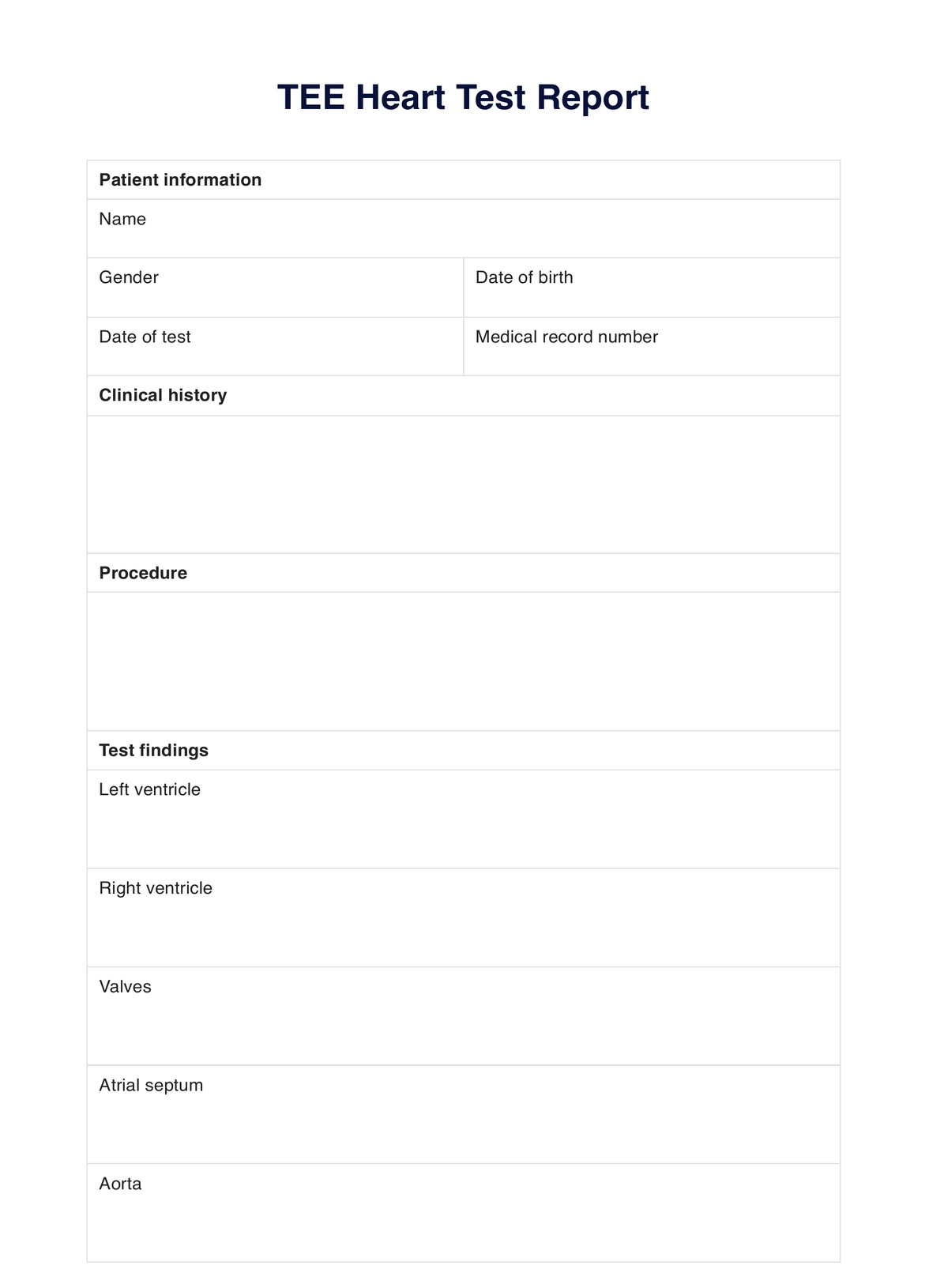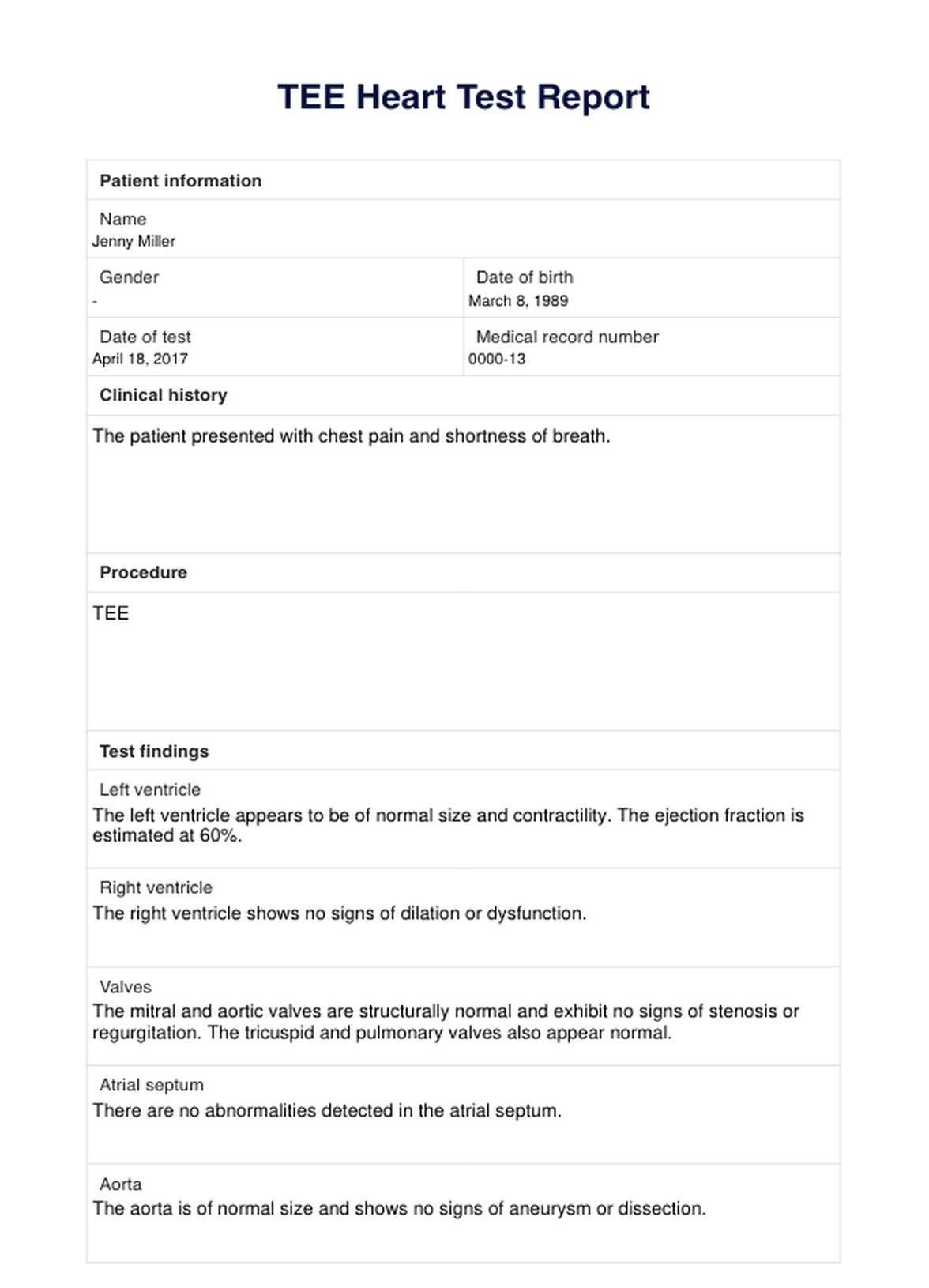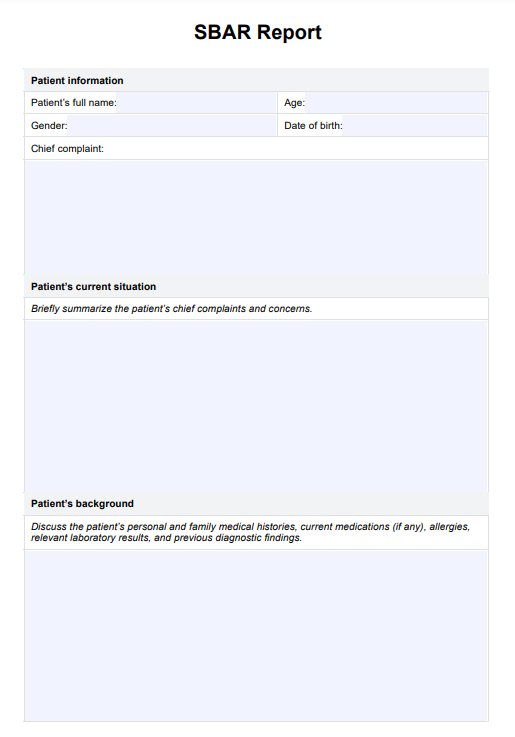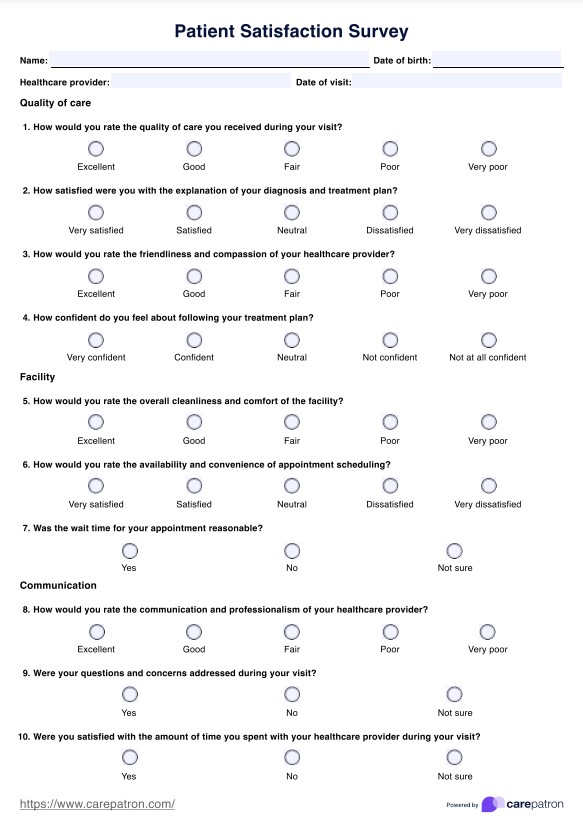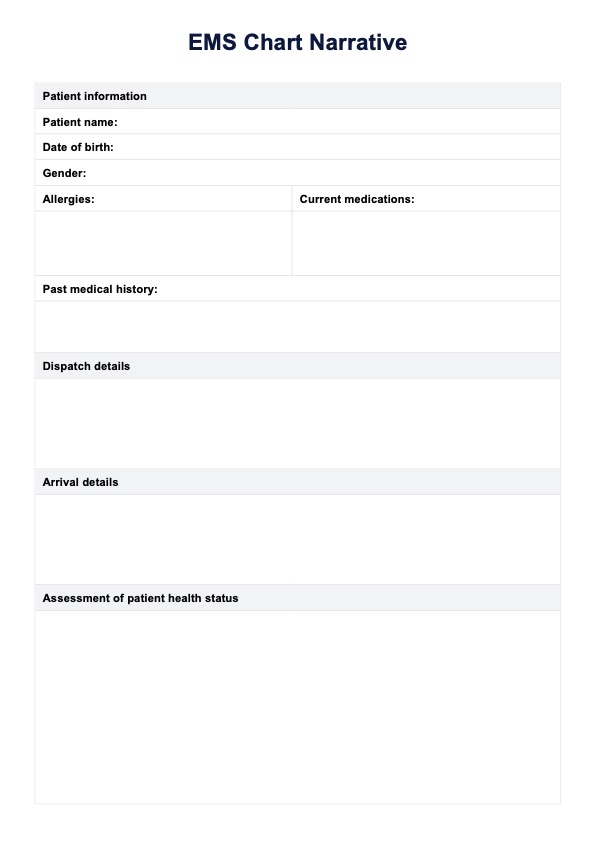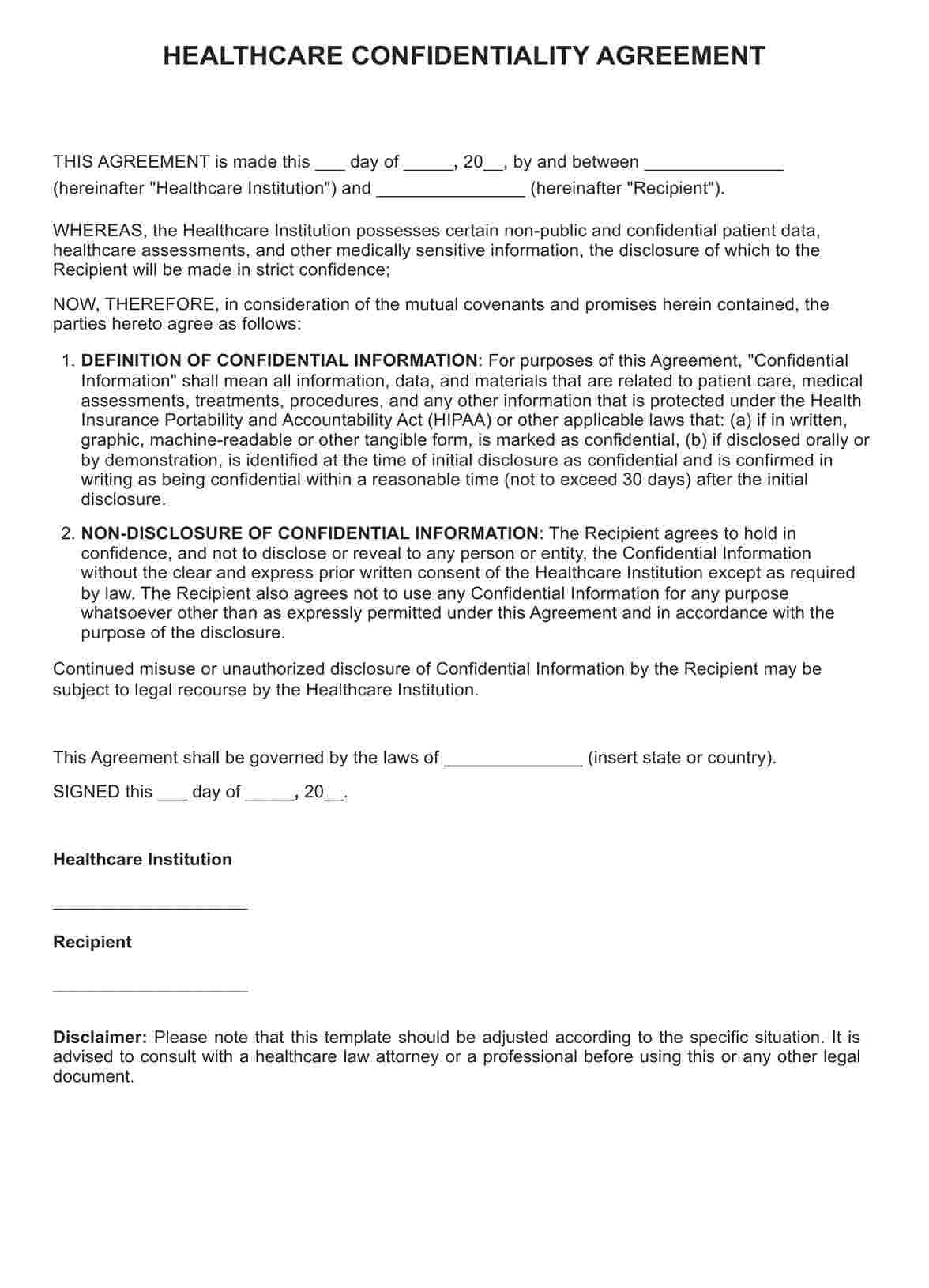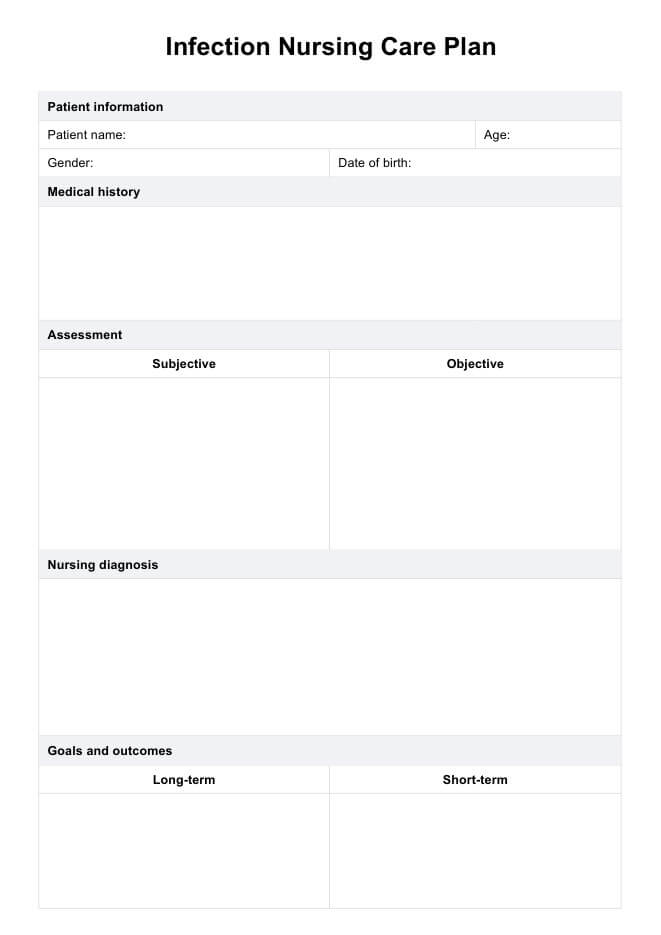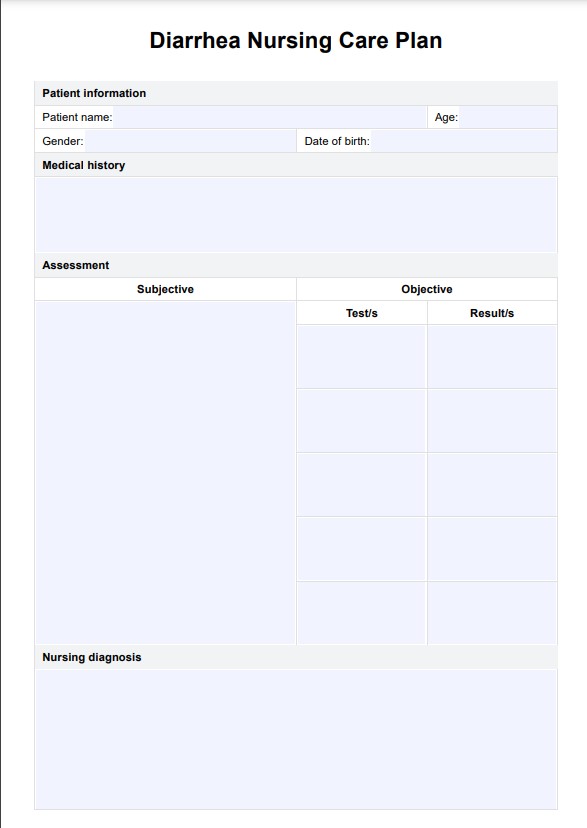TEE Heart
Learn how to efficiently document a TEE Heart Test result with our free report template. Download the PDF and example here.


What is a Tee Heart Test?
A Transesophageal Echocardiogram (TEE) Heart Test is a diagnostic procedure used to evaluate the structure and function of the heart. It involves inserting a thin, flexible tube with an ultrasound probe at the end through the mouth and into the esophagus to get detailed heart images. This test is often used when traditional echocardiograms cannot provide enough information.
This procedure offers a more comprehensive and close-up view of the heart's structures and valves than a standard echocardiogram. It can detect conditions that may be missed with other imaging methods, such as blood clots, aortic dissections, and infections of the heart valves. Moreover, the TEE Heart Test helps assess the severity of heart valve problems, determine the functioning level of artificial heart valves, and guide the surgeon during certain heart surgeries.
Additionally, TEE is used to evaluate the causes of strokes, especially in younger individuals where the source of clot formation is uncertain. Therefore, it is a pivotal tool in the diagnosis, treatment, and management of various heart conditions.
The results, recorded in a TEE Heart Test Report, provide valuable information to the healthcare team in making accurate diagnoses and creating effective treatment plans. They help identify the appropriate medication, surgery, or other interventions to manage the patient's condition.
TEE Heart Template
TEE Heart Example
How does it work?
Carepatron's free TEE Heart Test Report template is designed to help you document the procedure and results in a standardized format. Here's how to use the template:
Step 1: Download the template
Obtain a copy of the printable TEE Heart Test Report template using the link on this page. You can also access it from the Carepatron app or our resources library.
Step 2: Fill in the patient and procedure details
Start by entering the patient's name, gender, and medical history. Then, provide information about the type of TEE procedure, including any sedation or medications used during the test.
Step 3: Document the test findings
Using clear and concise language, document the results of the TEE Heart Test. Include any abnormal findings, such as heart valve problems or blood clots. Use images and diagrams to enhance the report's clarity.
Step 4: Summarize the findings and recommendations
In this section, provide a summary of the test results and any recommended treatment plans or follow-up procedures. The information should be presented in an organized manner for easy understanding by all members of the healthcare team.
Step 5: Save for record-keeping
You can save the completed report for future reference in the patient's electronic health record. This step ensures that the patient's medical history is documented accurately and can be easily accessed by all healthcare providers involved in their care.
When would you use this template?
You can use Carepatron's TEE Heart Test Report template to document the results of a transesophageal echocardiogram procedure. This can include routine screenings, diagnostic tests for heart conditions, or post-surgery follow-up evaluations. Alternatively, you can utilize the template to:
Educate patients about the TEE procedure and its purpose
You can use this template as a patient education resource, providing them with information about the TEE procedure and how to prepare for it. This can help alleviate any fears or concerns and ensure they are knowledgeable about their health and treatment.
Communicate effectively within your healthcare team**
The template is designed to be a comprehensive report that all members can easily understand and interpret. By using this template, you can effectively communicate and share pertinent patient information, ensuring coordinated and effective care.
Facilitate follow-up care
Once a TEE procedure is completed, it is crucial to monitor the patient's progress and any changes in their heart health. The TEE Heart Test Report template allows for easy comparison of previous and current results, making it easier to track and address any concerns or improvements.
Standardize documentation process
Our TEE Heart Test Report template is a fantastic tool for standardizing your documentation process. With this template, all TEE procedure results and relevant information can be recorded consistently and accurately, making it easier to maintain patient records and track their progress. This can also improve the overall efficiency of your clinical documentation.

What do the results mean?
The TEE test results offer critical insights into the structure and function of the heart. You can detect abnormalities such as blood clots, aneurysms, or issues with the heart valves during this examination. Here's a brief explanation of what different results might indicate:
● Normal result: The heart's chambers and valves are functioning correctly. There are no visible blood clots or tumors, and the aorta appears normal.
● Abnormal result: There could be several reasons for an abnormal result. There might be blood clots in the heart, a problem with one of the heart valves, a tumor in the heart, or an aorta problem.
Remember, these results must be interpreted regarding the patient's overall health and symptoms. Any abnormal findings will require further investigation, potentially involving other diagnostic tests or procedures.
Commonly asked questions
Healthcare providers may request a TEE Heart Test for patients experiencing chest pain, shortness of breath, or palpitations. It may also be ordered as a follow-up to other diagnostic tests or procedures.
TEE Heart Tests diagnose and monitor various heart conditions, including heart valve problems, blood clots, tumors, and aneurysms. They may also be utilized before or during surgeries involving the heart.
Most patients do not experience any pain during a TEE Heart Test. Mild discomfort or pressure may be felt when the probe is inserted, but sedation is typically administered to help patients relax during the procedure. Patients may feel a sore throat after the test due to the probe passing through the esophagus.


